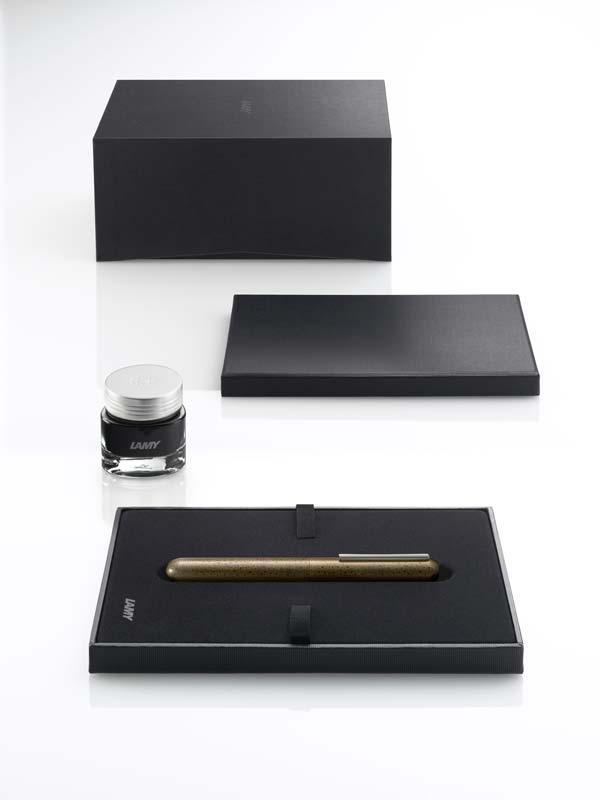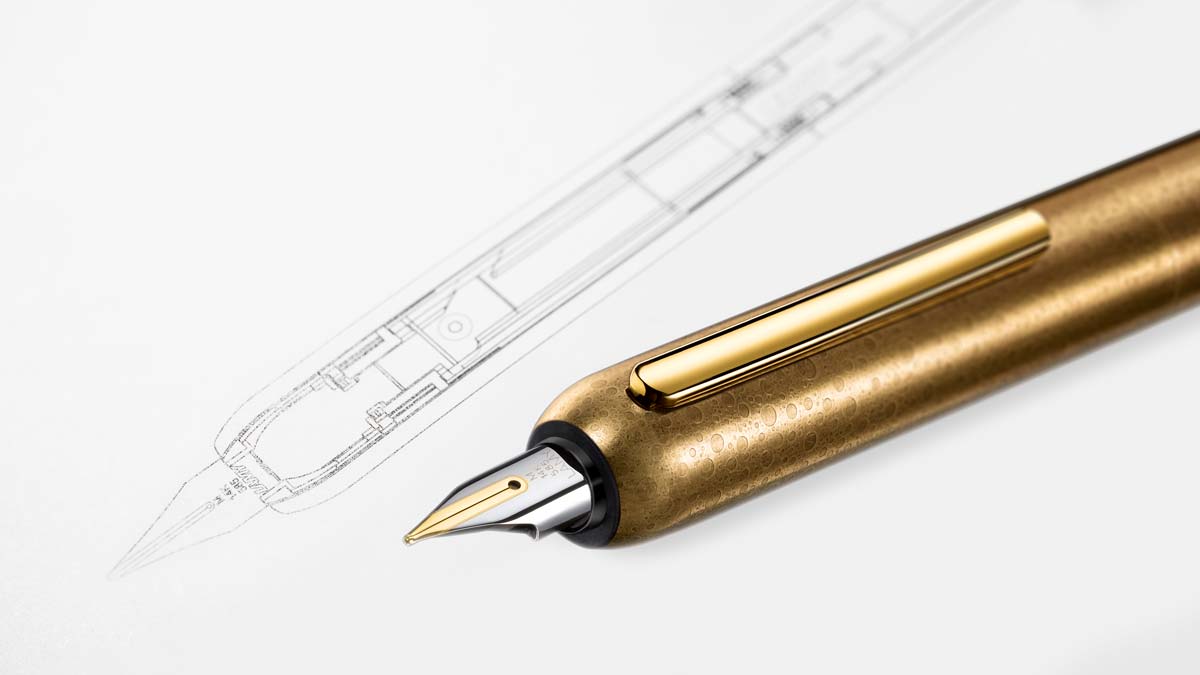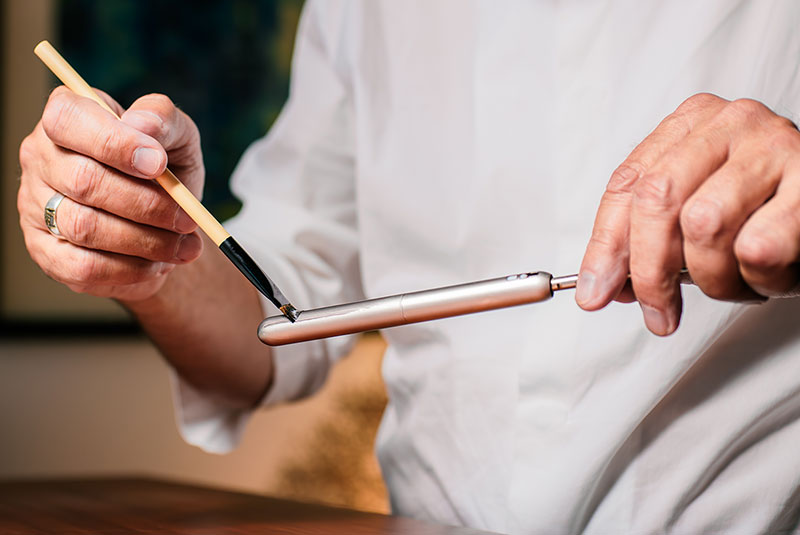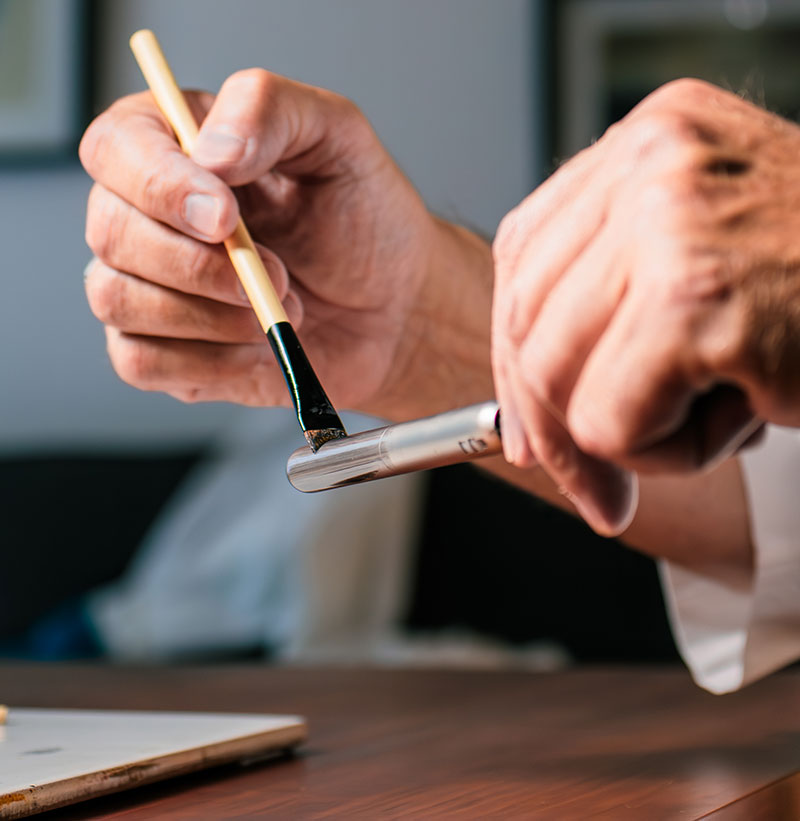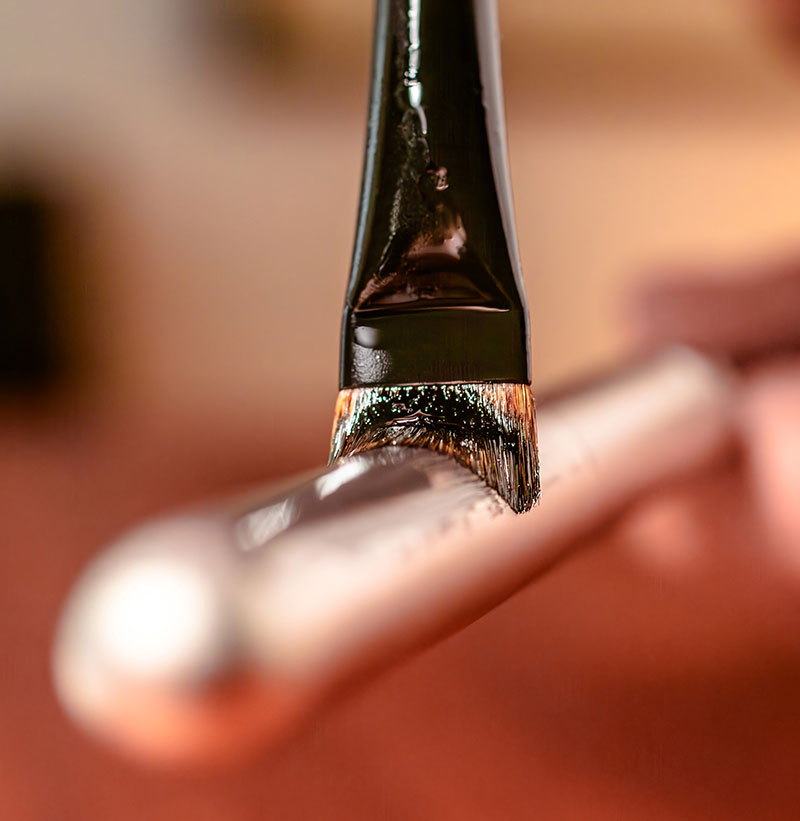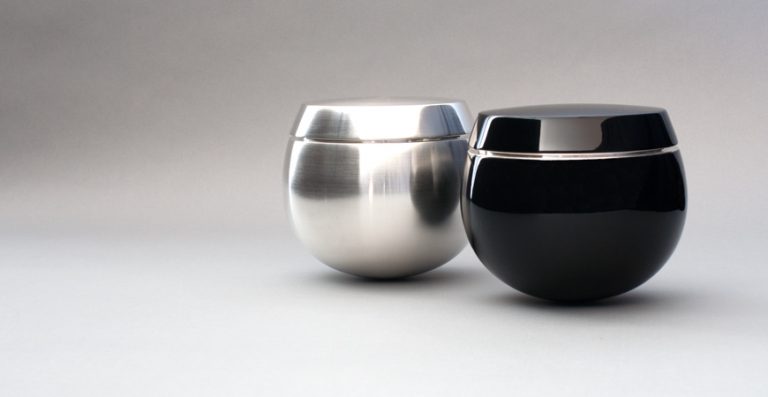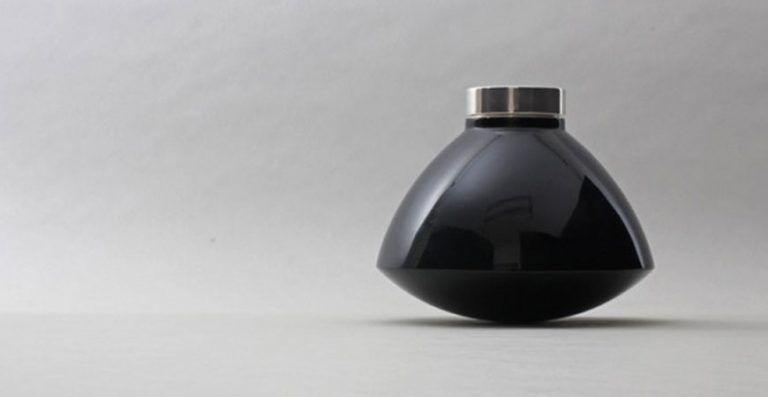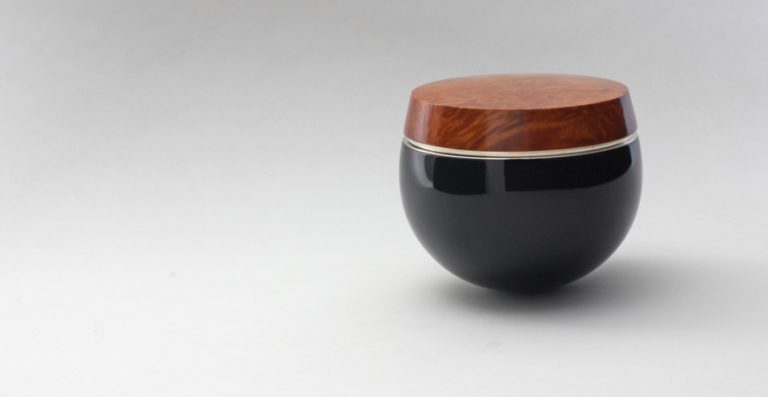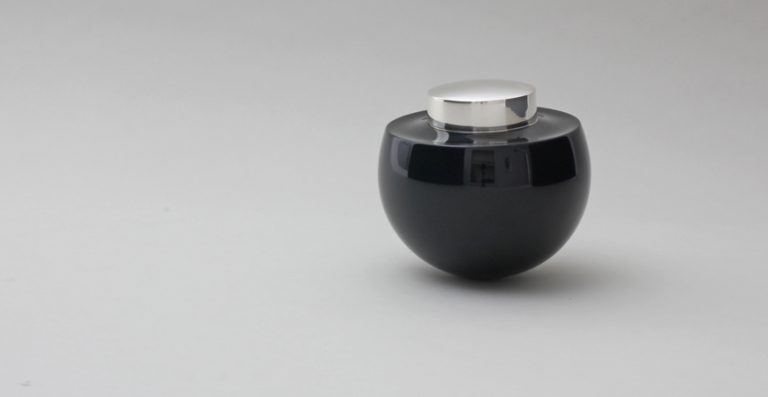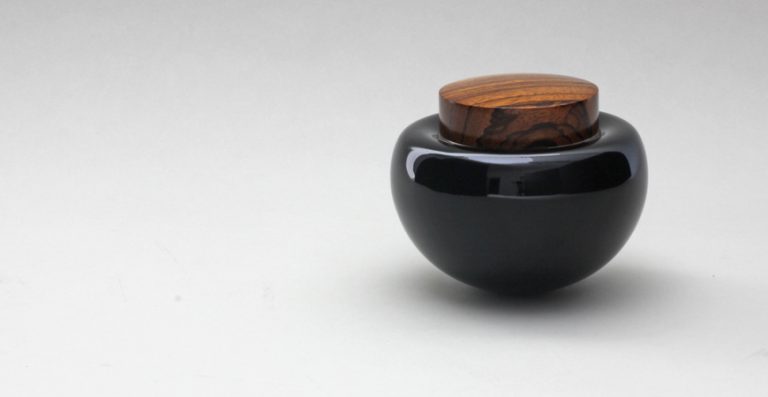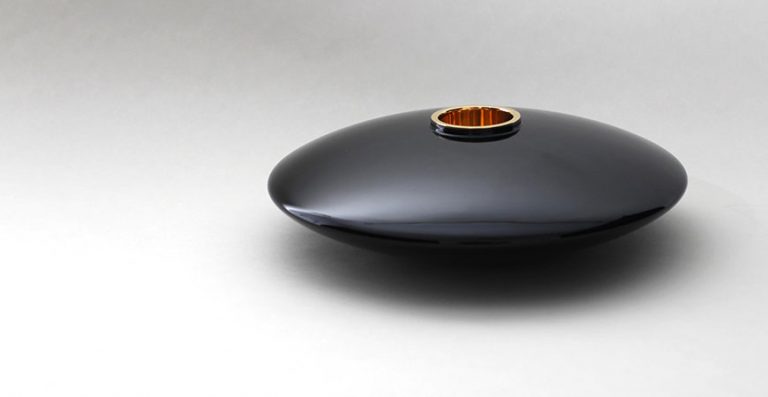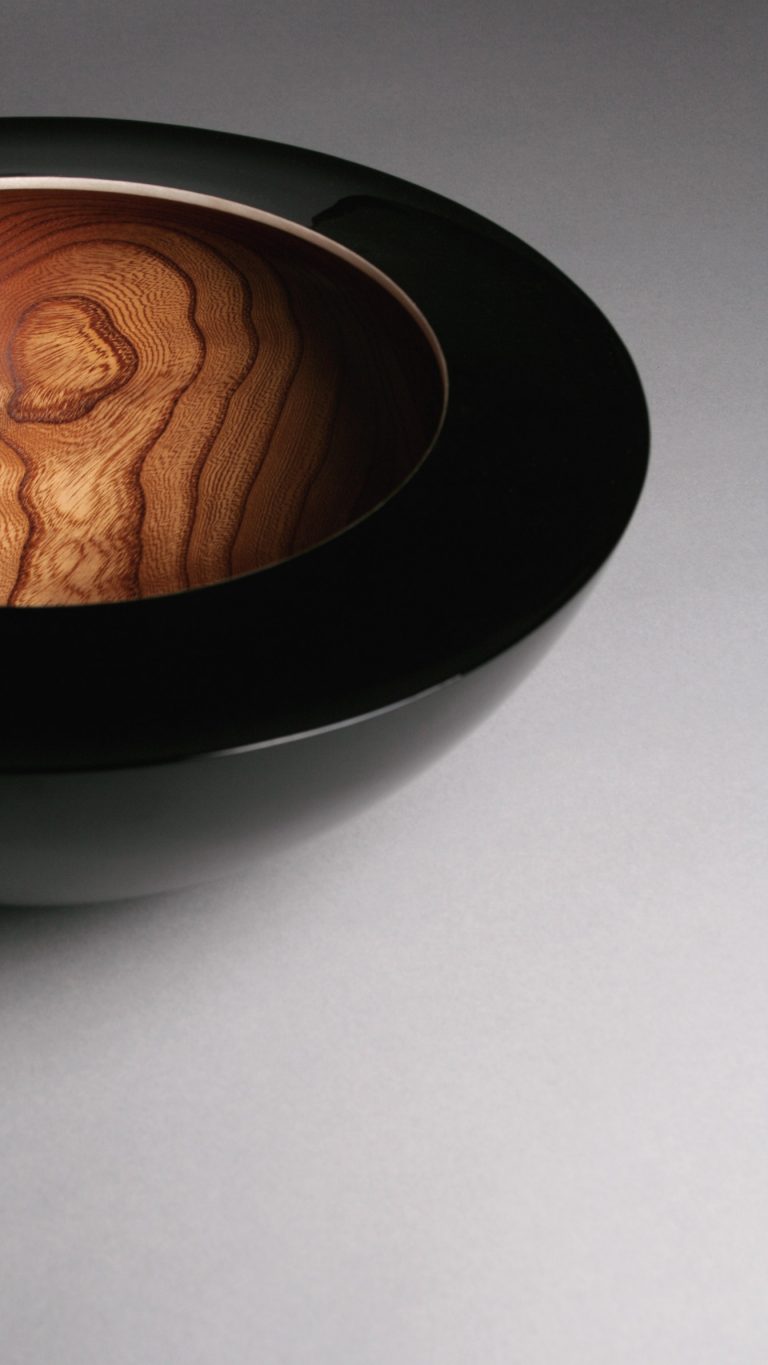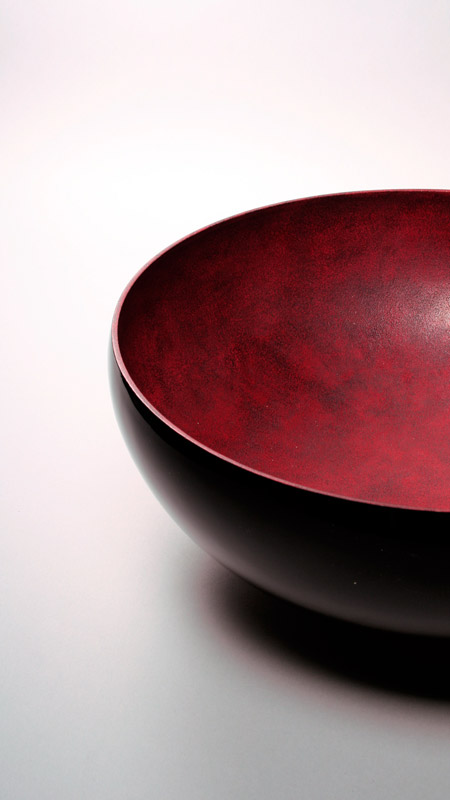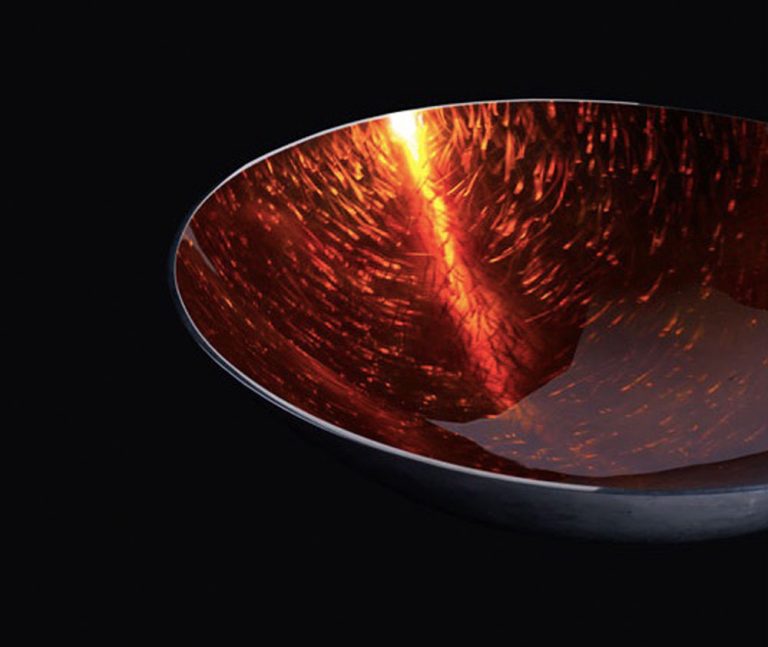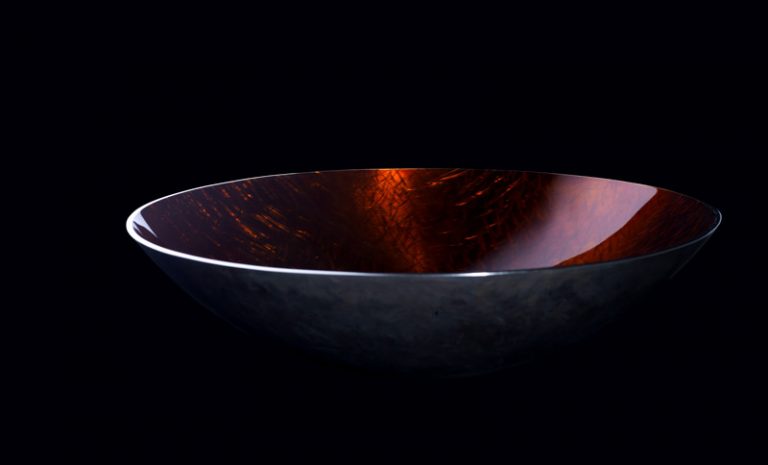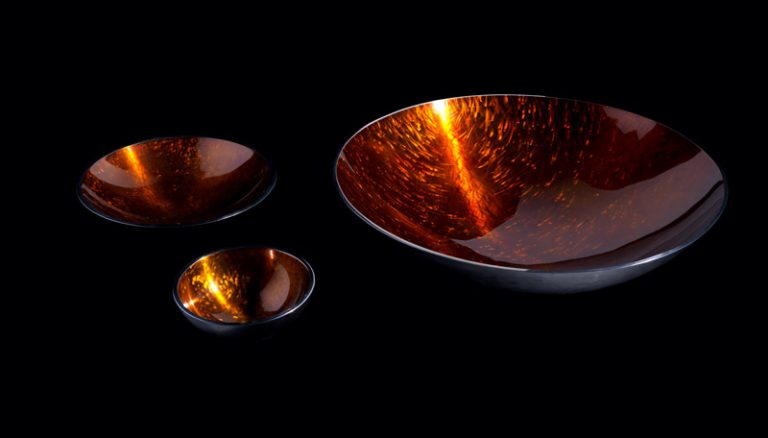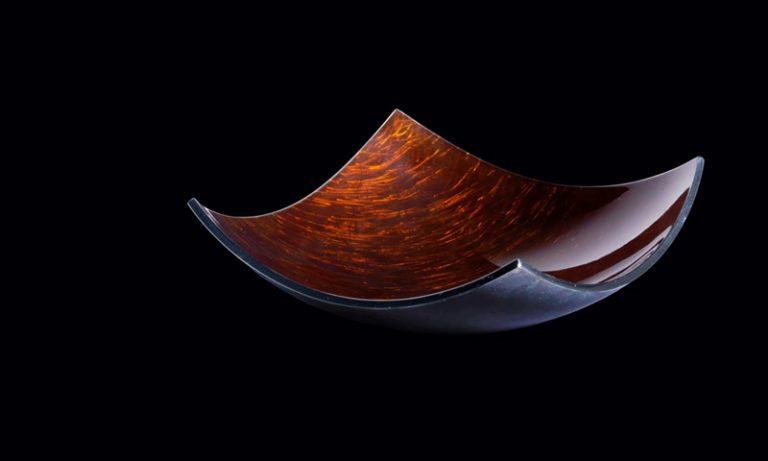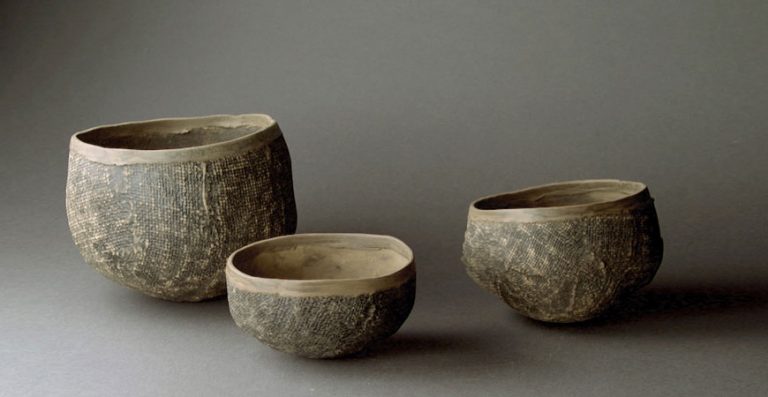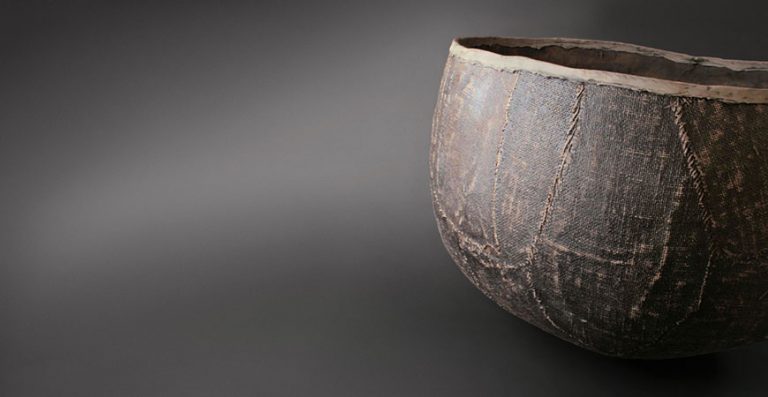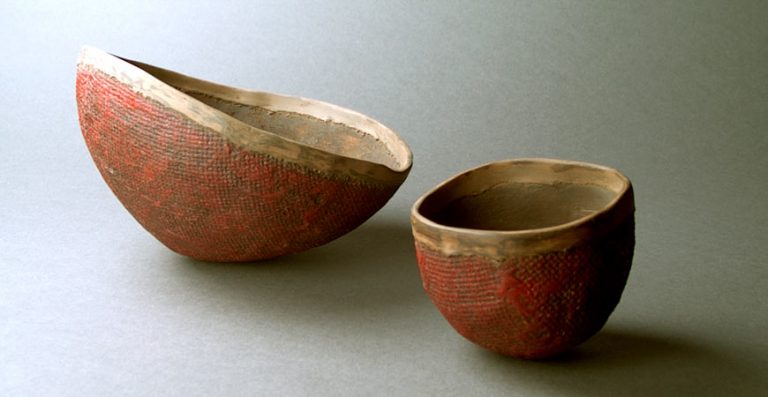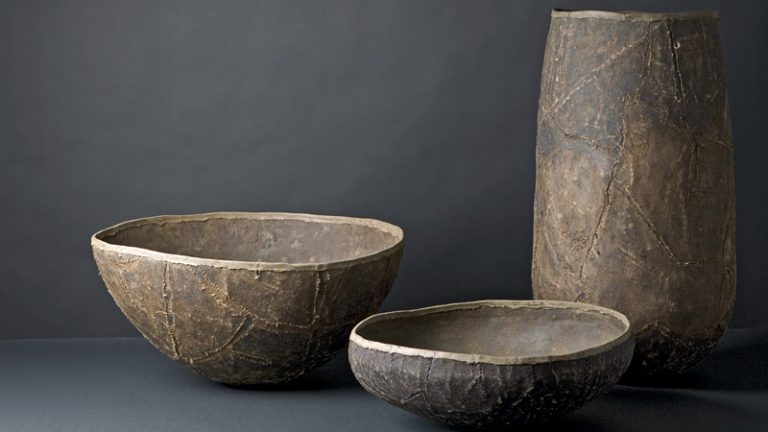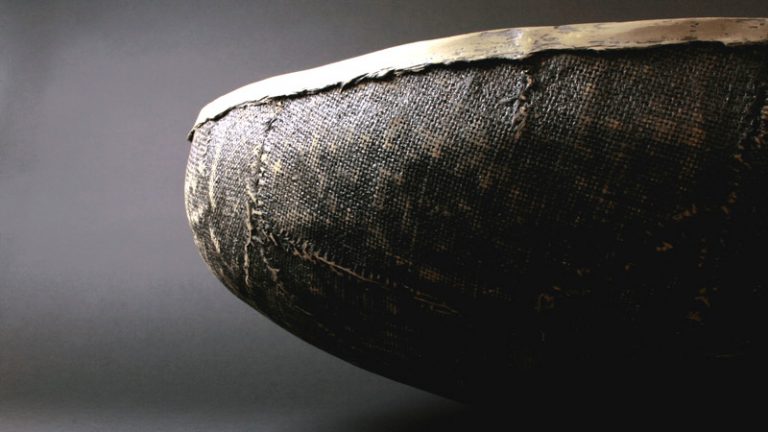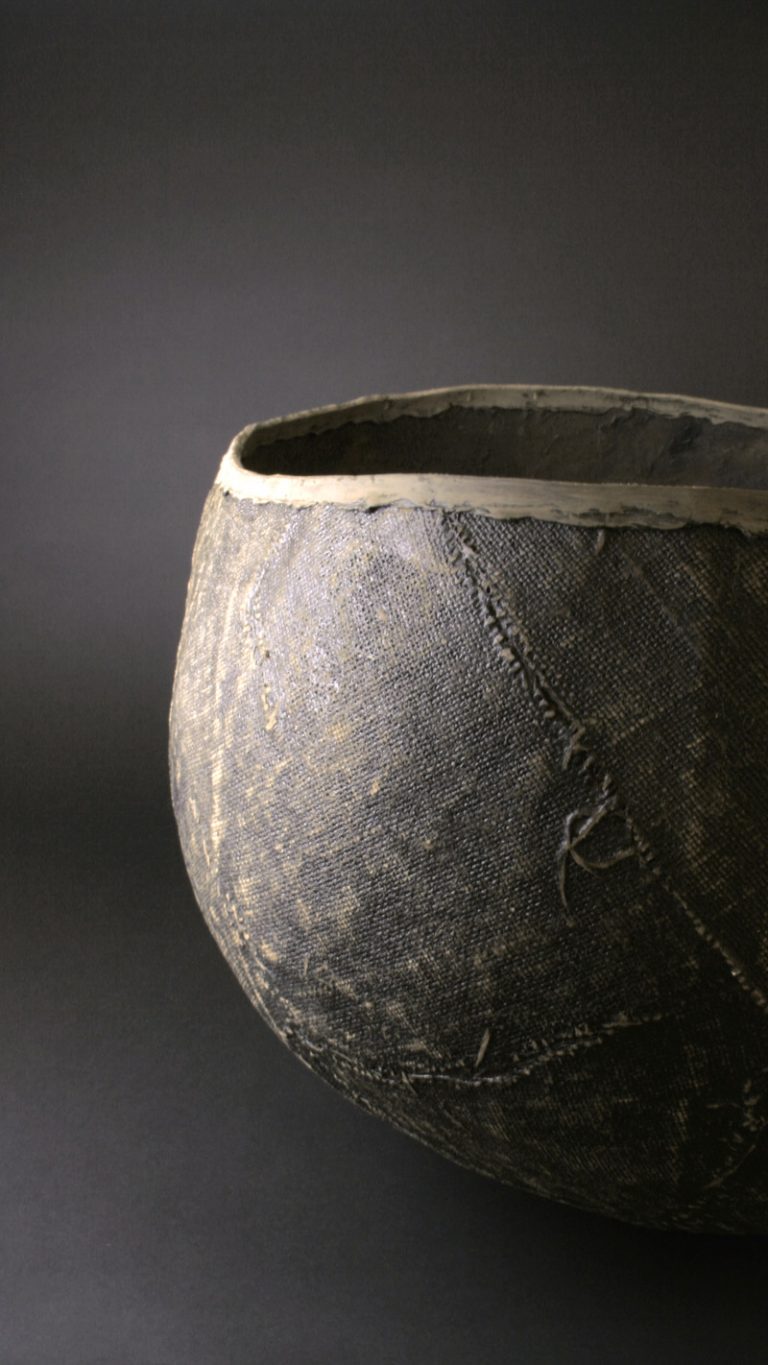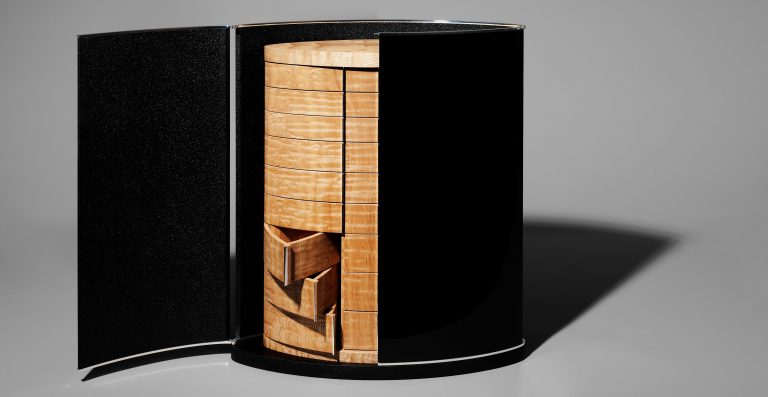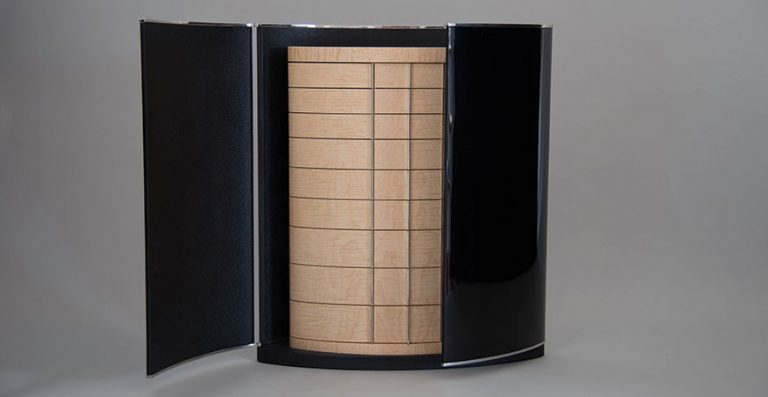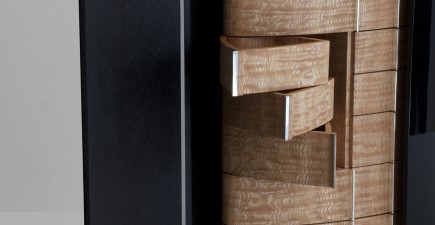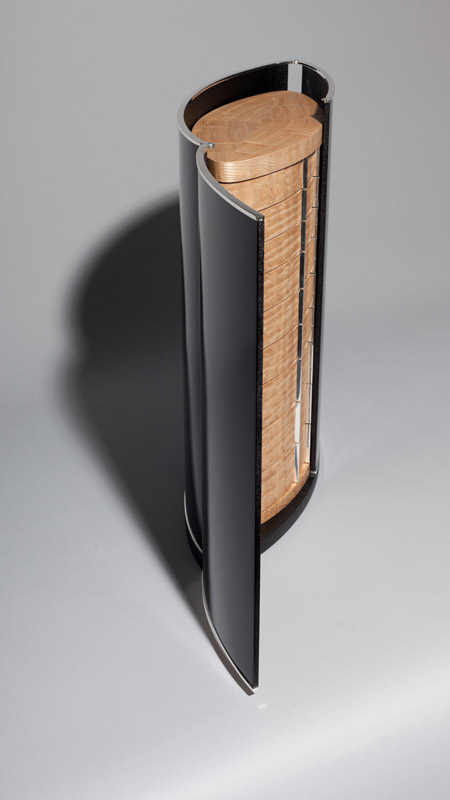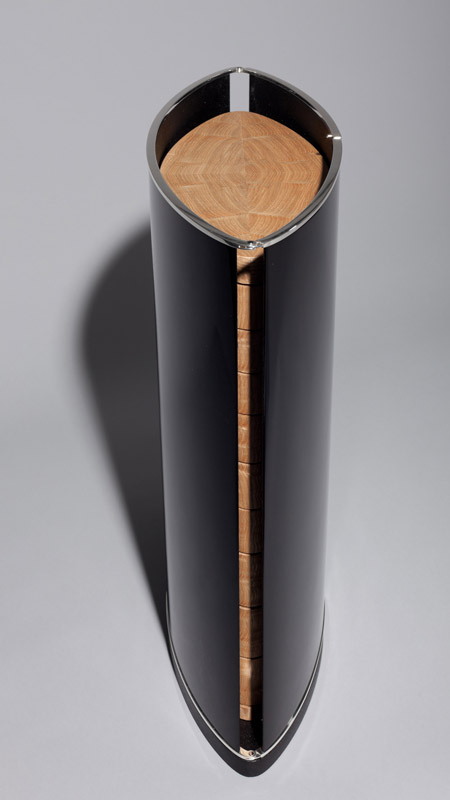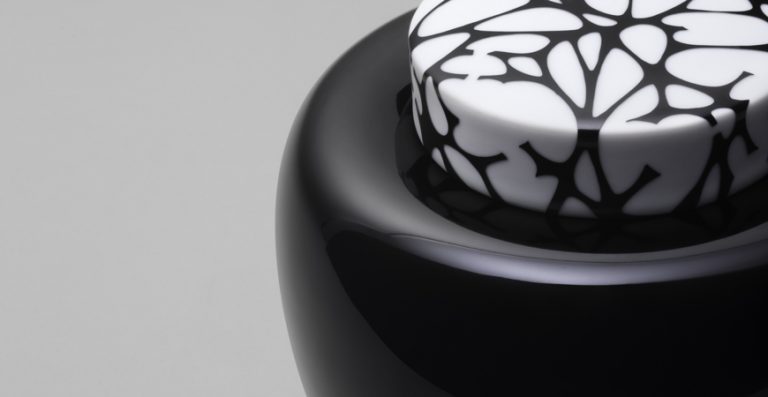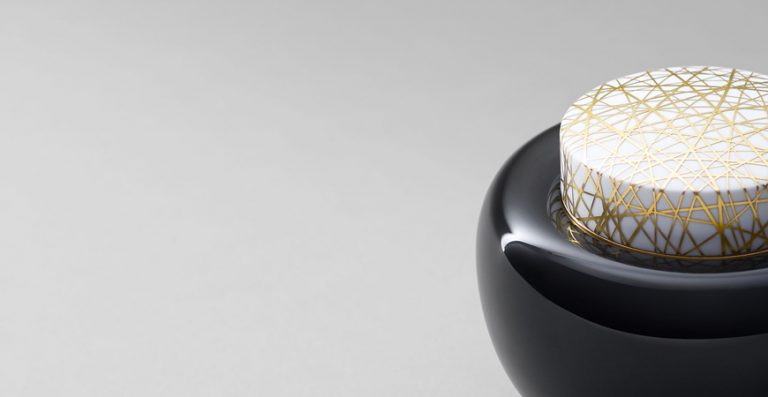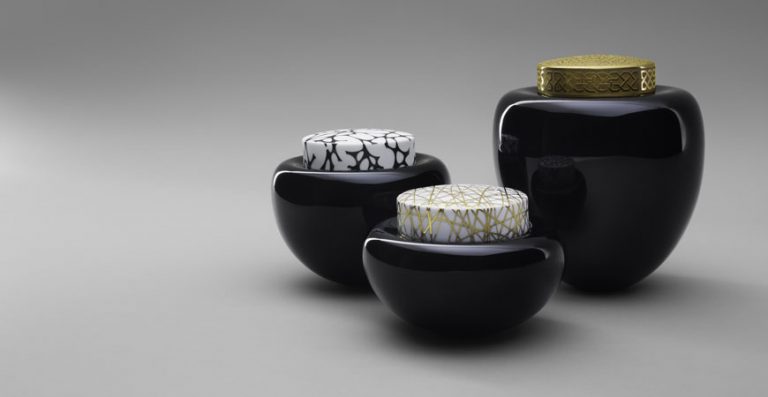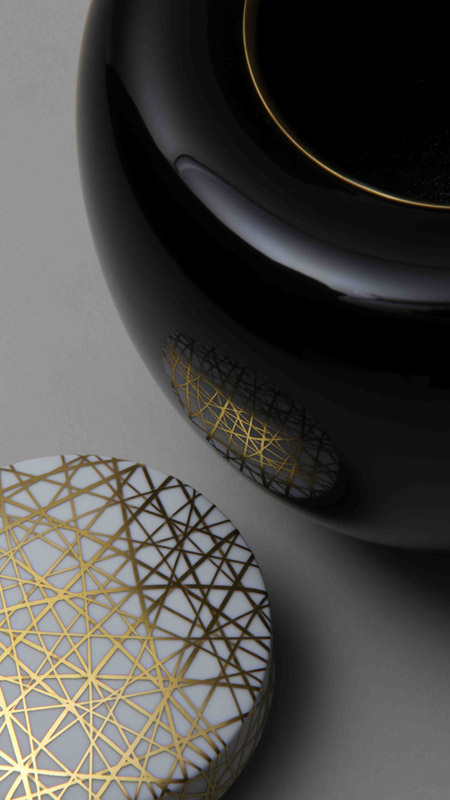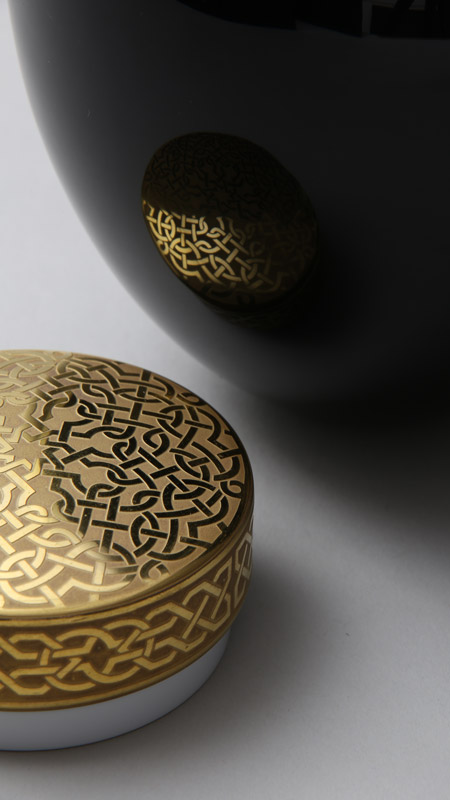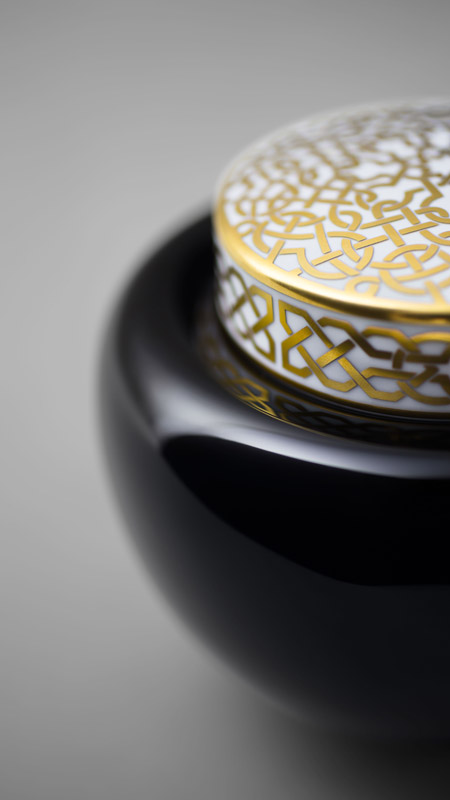The contents of this website are researched with the greatest care. However, the provider does not assume any liability for the accuracy, completeness or up-to-dateness of the information provided. Contents of external links are subject to the liability of the respective provider. The provider does not adopt the content and opinions of the linked websites as his own.
LAMY
Edition 2023 dialog urushi ray
Nature has inspired artists throughout time. In music, in poetry, in painting. Seasons, plants, animals and the four elements – all formative companions and eternal sources of life. The LAMY dialog urushi ray edition is the interpretation of a natural structure on a technical instrument, enriched by the careful hand of an artist with a natural, warm feel.
Urushi has been used in traditional Japanese arts and crafts for thousands of years. It can take up to 30 years from the manufacturing of the lacquer to its use. The quality of this natural material is unrivalled even today – thanks to its resistance, its intensity and its auratic beauty, which instantly casts a spell over onlookers.
This limited edition of 50 unique pieces captures the fascination of urushi craftsmanship in an extraordinary dilogy.
An extraordinary symbiosis. Tradition and modernity. Asia and Europe.
The encounter with contemporary materials and processing methods shows Urushi in a new light. Virtuoso lacquer art meets a fountain pen whose form and function are equally testimony to masterful craftsmanship and technical excellence: LAMY dialogue.
The fountain pens are available individually as the
„ray gold“ und „ray palladium“ für 2.700,-€ UVP
to purchase.
The basis of the two designs, ray gold and ray palladium, is the symbiosis of the lacquer with the element of water. When applying each wafer-thin layer of the Japanese lacquer, a great deal of feeling is required to achieve an appealing result. That’s why brushes made of badger and deer hair are used. The subsequent process of spraying fine droplets of water onto the lacquered surface again requires a great deal of dexterity, as only the right mixture of these elements leads to the desired result. Ultimately, the naturally warm appearance of the surface is achieved by the polymerisation typical of urushi, as it occurs more quickly at the edge of each droplet than under the droplet’s dome, thus creating the unique decor and tactile feel of the surface.
For the ray palladium and ray gold models, the carefully pre-treated stainless steel case parts are given a high-quality coating using a PVD process. A very fine layer of urushi lacquer is then applied on top. The structuring process is then finally applied to the lacquer by using a brush and spraying fine droplets of water.
While the clip and ball valve of the ray gold model are polished and gold-plated, the ray palladium model has a galvanically matt-finished clip and shiny palladium ball valve.
Just as a musician masters his instrument, an urushi master is in full control of the Japanese lacquer. It takes years of practice, calm and discipline to apply the wafer-thin, translucent layers of lacquer, which have the consistency of liquid honey, with perfect evenness. But, in addition to this virtuosity, an urushi master also requires intuition and sensitivity in particular.
“I work in tune with the material. I hear and feel more than I see. I regard that internally as a way of penetrating the surface”,
says Schmid. The Bremen artist created the LAMY dialog urushi ray edition. Working on and finishing each individual fountain pen requires a great deal of time and patience. Because too much or too little of anything, be it when applying the lacquer or subsequently spraying the fine water droplets, can be of crucial significance for the artistic result. It is never possible to predict exactly when this process will reach perfection. The material defines how long it must be left.

Manfred Schmid, born in Bremen in 1958, has been interested very early in Japanese culture. He started his professional Career in another demanding craft profession, the marquetry. In this area he was 10 years self-employed, when he decided to study Japanese lacquer techniques in Barcelona. At the Escola Massana and the Escola Llotja he laid the foundation for his current profession. From 1998 to 2004 Manfred Schmid learned and perfected urushi lacquer art in his studio in Barcelona. Since 2004 he lives and works back in his hometown of Bremen. From here, he has perfected his work, and participated in national and international exhibitions in the USA, Japan, Spain and Germany
Die japanische Kunst hat über Jahrtausende vieles hervorgebracht, was man im Westen schätzte weil es eigenständig war, von den Materialien und den Formen, oft geprägt von schlichter Eleganz und unaufdringlicher Schönheit. Vieles hat auch die westliche Kunst beeinflusst, vieles konnte trotz intensiver Bemühungen nicht kopiert werden. Es gibt auch einen Ausdruck in der japanischen Sprache, den man nicht übersetzen kann, der in einem Wort eine ganze Philosophie in der gestalterischen Umsetzung widerspiegelt: shibui. Man kann sagen shibui steht für Schlichtheit, für Eleganz, für unaufdringliche Schönheit, für japanische Ästhetik. Oder man sagt einfach shibui steht für etwas Vollkommenes, über das man nicht erst nachdenken muss, etwas das als angenehm wahrgenommen und akzeptiert wird.
Was hat uns Japan in seiner Tradition ebenso gelehrt? Die Perfektion, den Willen und die Geduld in der Umsetzung handwerklicher Fähigkeiten. Man stelle sich den Moment vor, in dem die schwarze Tusche eines Pinsels das weiße Papier berührt: das Schriftzeichen muss unmittelbar und perfekt umgesetzt werden, es gibt kein zurück und keine Korrektur. Man muss eben perfekt sein in dem was man tut. Manfred Schmid hat sich dieser Perfektion verschrieben. Er arbeitet mit einem Material, dessen schwer kalkulierbare Natürlichkeit ein Miteinander erfordert, wie es bei kaum einem anderen Werkstoff erforderlich ist. Urushi, der Saft des japanischen Lackbaumes, lässt sich nur mühsam und mit viel Geduld verarbeiten. Ein Material, dessen Eigenschaften oder dessen Eigensinn eine Symbiose erfordert, die man als Lackkünstler mit dem Material eingehen muss, man muss sich miteinander verständigen können.
Tapped from the lacquer tree and refined in various ways, Japanese lacquer is applied in wafer-thin layers over a long period of time. It does not dry; it hardens slowly under the influence of a highly humid atmosphere. It hardens while remaining flexible nevertheless. It has a cool appearance and yet it is pleasant to the touch. Building up the layers of lacquer is a complex process. One could liken its structure to that of the human body and the way it is made up of bones, flesh and skin. In the case of lacquerwork, what one sees is the skin; one looks at the surface. But the surface can only be as good as the foundation, like bones in the form of substrates and flesh in the form of primer coats. Patience and precision are the indispensible prerequisites for the success of the work as a whole.
Eine schnelle oder unkonzentrierte Vorgehensweise rächt sich meistens erst ganz am Ende in Form einer unschönen Haut. Das Grundprinzip beruht auf einer zur Oberfläche hin immer feineren Struktur der Schichten bis zur endgültigen Versiegelung in den letzten Politurschritten. Ursprünglich seit Jahrtausenden als Schutzüberzug verwendet, entwickelte sich urushi sehr schnell zu einem Dekormaterial von einer überraschenden Vielfalt. Das im japanischen Lackbaum befindliche Enzym Laccase verleiht dem Lack Eigenschaften, welche ihn weit über den Härtegraden anderer Lacke stehen lässt. Dies ermöglichte die Entwicklung der für Japan typischen Einstreutechniken in Edelmetallen oder Perlmutt, bei welchen das Lackmaterial mindesten so hart sein muss wie das eingestreute Material.
Als traditionelle Grundfarben gelten der Schwarz- und der Rotlack, wie er auch noch heute bei zahlreichen japanischen Utensilien Verwendung findet. Manfred Schmid hat sich vor allem dem tiefen Schwarz verschrieben, der Grundfarbe in ihrer Tiefe, ihrer Brillanz, ihrer Schönheit. Der Schwarzlack wird durch die Beimischung von Eisenfeilspänen hergestellt. Das Eisen löst eine chemische Reaktion und die Verfärbung des Lackes aus, aus welchem anschließend die Späne gefiltert werden. Hierdurch entsteht eine Material von einer scheinbar unendlichen Tiefe, in welchem sich keine Pigmente befinden. Durch diesen Umstand ist es möglich, durch mehrfachen hauchdünnen Auftrag eine Dichte und Tiefe im Material zu erzielen, welche häufig an Glas erinnert.
When processing Japanese lacquer, manual labor is also necessary but it entails quite a gentle manner of implementation. The wafer-thin layers are applied with brushes made of human hair, then sanded with natural charcoal and polished using leather and oil. Japanese lacquering masters like to polish the final layer with the skin of their fingers or the ball of the hand, which is viewed as the finest structure and a personal investment on the part of the artist. In the production of lacquer objects, immediate contact between the artist’s skin, the material and the individual layers renders a unity between the form, the raw material and the human being engaged in the process. This unity also reflects itself in the forms of objects produced by Manfred Schmid.
Diese Einheit spiegelt sich auch in den Formen der Objekte von Manfred Schmid. Es sind eigentlich Gegenstände wie man sie als Nutzobjekte kennt, umgesetzt als solitäre Kunstobjekte von eigener Kraft und Aussage, Objekte die man anfassen und auch benutzen sollte, aus Respekt vor der Perfektion oder auch schlicht aus Angst vor Beschädigungen als Skulpturen versteht und positioniert. Manfred Schmid spielt mit den Materialien und Formen. Er verbindet das tiefe Schwarz mit Silber, das glänzende Schwarz mit dem Matten, bindet in der Oberfläche strukturiertes Rot mit ein, oder kombiniert die Lackoberflächen mit einer sichtbaren Holzstruktur. Optische Zusammenspiele, die sich konsequent an der Schlichtheit der Objekte orientiert, die keinen Raum für gestalterische Spielereien lassen, die in ihrer Formensprache ruhen, den Betrachter aber animieren sich mit den Reflexen und visuellen Lichtspielen auseinanderzusetzen.
Die Partner von Manfred Schmid sind ebenfalls Perfektionisten in ihren eigenen Fachgebieten. Auch hier geht er eine Symbiose ein, die sich konsequent durch sein gesamtes Schaffen zieht. Er hat sich in vielen Jahren der mühsamen Arbeit, des mentalen Erklimmens des Berges Fuji, ein handwerkliches und künstlerisches Niveau erschaffen, das selbst in Japan seines gleichen sucht. Er ließ sich nie beeinflussen, er ging seinen eigenen Weg durch Höhen und Tiefen. Und er wird seinen Weg weiter gehen, im Stil der japanischen Tradition und mit japanischem Handwerk, aber in seiner eigenen Formensprache und mit seiner eigenen Signatur, welche jedes Objekt zu einem Unikat werden lässt und jenen Begriff wiederspiegelt, den man auf sein gesamtes Oeuvre anwenden darf – shibui.
Günther Heckmann
- Auguste Papendiek Preis der Sparkasse in Bremen 2012
- Sonderpreis der Ishikawa International Urushi Exhibition 2009
“Hideo Nakashima Award”, Kanazawa, Japan - Justus Brinckmann Preis ’08, Museum für Kunst und Gewerbe Hamburg
- Bayerischer Staatspreis ’07 für herausragende Leistungen in Innovation
und Gestaltung von japanischen Lackobjekten (IHM München) - Nominierung für den Auguste Papendiekpreis ’06, Bremen
- Form 2003, Tendence Lifestyle, Frankfurt, Main
- Stipendium der Carl Duisberg Gesellschaft für japanische
Lacktechnik an der Escola Massana in Barcelona, Spanien
- Sonderausstellung “Meister der Moderne”, München
- Dimensionen, Große Gefäße, Galerie Handwerk, München
- Kunstmesse München
- Ishikawa International Urushi Exhibition 2009
- Sonderausstellung „Japanese Laquerware“ im Ritz Carlton Miami, USA
- Galerie Bells oficis, Barcelona, Spanien
- Sonderausstellung “Form 2003” Tendence Lifestyle, Frankfurt, Main
- “Portrait” Bayerischer Kunstgewerbeverein, München
- Grassimuseum, Museum für Angewandte Kunst, Leipzig
- Museum für Kunst und Gewerbe, Hamburg
- Staatliche Kunstsammlungen, Schloss Pillnitz Dresden
- Grassimuseum, Museum für Angewandte Kunst, Leipzig
- Staatliche Kunstsammlungen Dresden
- Museum für Kunst und Gewerbe, Hamburg
- Museum für Lackkunst, Münster
- Grassimuseum, Museum für Angewandte Kunst, Leipzig
- Grassimuseum, Museum für Angewandte Kunst, Leipzig
- Museum für Kunst und Gewerbe, Hamburg
- Heisei Memorial Art Galerie in Shibuya, Tokio
PORTFOLIO
Die Objekte der Reihe „Religio“ wurden in der kanshitsu-Technik, einer Textilverklebungstechnik gefertigt. Es handelt sich hierbei um eine sehr alte traditionelle Lacktechnik zur Herstellung von Grundkörpern (Inro, Schalen für Speisen, Rüstungen der Samurai etc.). Religio bedeutet Rückbindung an den Ursprung. Ich arbeite mit dieser Technik losgelöst von traditionellen japanischen Gestaltungsprinzipien. Diese Gefäße, mit denen ich neue Wege im Ausdruck mit urushi beschreite, lassen Raum für Assoziationen. Es sind Gefäße ganz ohne Verkleidung, direkt, unmittelbar, ursprünglich und kraftvoll.
„A treasure chest for princes and kings“
The desire to design a cabinet which borrows on a rich tradition established during the reign of Augustus the Strong by Martin Schnell and his lacquered furniture crafted in Dresden has finally been fulfilled after several years of development thanks to the German Workshops in Hellerau, with whom I collaborated closely to produce this object. The interior of each piece is manufactured individually using a different type of wood. This renders each piece a unicum worldwide. The efforts required to execute such a project are enormous and they would not have been possible without the cooperation of the German Workshops. All metal fittings required for the cabinet such as ball bearings, suspensions, door mountings etc. were custom-designed and tested on a prototype before being manufactured in their final form for the cabinet. The basic idea was to implement this historic furniture tradition in a contemporaneous fashion. In addressing this challenge, we were not only delighted to be employing an ancient technique in our use of Japanese lacquer but also to be drawing on old traditions from the Baroque and Renaissance periods through acquisition of a veneer made of Hungarian flower ash. This wood was used in those times to ennoble cabinets, caskets and other objects meant for kings. It is very difficult to procure, however, especially in the width required for our cabinet. We were really lucky to find a suitable amount at a veneer dealer’s shop near Würzburg. During the manufacturing process, 2 of the 3 sheets were ruined; thank God the third one stayed intact. In cases of such extreme curvature like the kind which you find in this cabinet, use of such brittle, wavy-grain veneer brings you to the limits of what is even possible. The sections for which application of Japanese lacquer was envisaged were subjected to special climate tests to find a suitable, non-deforming material which could withstand the high humidity required by Japanese lacquer while it sets. The lacquer, glossy on the outside and applied using structuring technique on the inside, posed a great challenge due to the size of the surfaces. Thus we are all the more delighted to be able to present this cabinet to you now.
CONTACT
Manfred Schmid
Bocholterstrasse 27
28327 Bremen
mobil +49 (0) 176 – 22 17 37 52
info@urushi.de
Manfred Schmid
Bocholterstrasse 27
28327 Bremen
mobil +49 (0) 176 – 22 17 37 52
info@urushi.de
Fotos Lamy: Tillmann Franzen
Fotos: Matthias Hornung
Objektfotos: Manfred Schmid
Umsatzsteuer-Id.-Nr.: DE 220862557
inhaltlich Verantwortlicher: Manfred Schmid
DISCLAIMER OF LIABILITY
The contents of this website are researched with the greatest care. However, the provider does not assume any liability for the accuracy, completeness or up-to-dateness of the information provided. Contents of external links are subject to the liability of the respective provider. The provider does not adopt the content and opinions of the linked websites as his own.
The contents of this website are researched with the greatest care. However, the provider does not assume any liability for the accuracy, completeness or up-to-dateness of the information provided. Contents of external links are subject to the liability of the respective provider. The provider does not adopt the content and opinions of the linked websites as his own.
Data protection
Personal data (hereinafter mostly referred to as “data”) are processed by us only in the context of the necessity and for the purpose of providing a functional and user-friendly website, including its contents and the services offered there.
Pursuant to Article 4 (1) of Regulation (EU) 2016/679, the Basic Data Protection Regulation (hereinafter referred to as the ‘GDPR’), ‘processing’ means any operation or series of operations carried out with or without the aid of automated procedures personal data, such as collecting, collecting, organizing, organizing, storing, adapting or modifying, reading out, querying, using, disclosing through transmission, dissemination or any other form of provision, reconciliation or the join, the restriction, the deletion or the annihilation.
With the following privacy policy, we inform you in particular about the nature, scope, purpose, duration and legal basis of the processing of personal data, as far as we either alone or together with others decide on the purposes and means of processing. In addition, we will inform you below about the third-party components that we use for optimization purposes and to increase the quality of use, insofar as third parties process data in their own responsibility.
Our privacy policy is structured as follows:
I. Information about us as responsible
II. Rights of users and stakeholders
III. Information about data processing
I. Information about us as responsible
The responsible provider of this website in terms of data protection is:
Manfred Schmid
Bocholterstrasse 27
28327 Bremen
mobil +49 (0) 176 – 22 17 37 52
info@urushi.de
II. Rights of users and stakeholders
With regard to the data processing described in more detail below, users and data subjects have the right
- upon confirmation of the processing of the data in question, information about the processed data, further information about data processing and copies of the data (see also Art. 15 GDPR);
- Correction or completion of incorrect or incomplete data (see also Art. 16 GDPR);
- for immediate deletion of the data concerning them (see also Art. 17 GDPR), or, alternatively, if further processing pursuant to Art. 17 (3) GDPR is required, to restriction of processing in accordance with Art. 18 GDPR;
- upon receipt of the data concerning them and provided by them and on the transmission of this data to other providers /controllers (see also Art. 20 GDPR);
- on complaint to the supervisory authority, if they consider that the data concerning them are processed by the provider in breach of data protection provisions (see also Art. 77 GDPR).
In addition, the provider is obliged to notify any recipients to whom data have been disclosed by the provider about any correction or deletion of data or restriction of processing, which takes place pursuant to Articles 16, 17 para. 1, 18 GDPR teaching. However, this obligation does not exist insofar as this notification is impossible or disproportionate. Notwithstanding, the user has a right to information about these recipients.
Likewise, according to Art. 21 GDPR, users and data subjects have the right to object to the future processing of data concerning them, provided that the data provided by the provider in accordance with Art. 6 para. 1 lit. f) DSGVO be processed. In particular, an objection to the processing of data for the purpose of direct advertising is permitted.
III. Information about data processing
Your data processed on the use of our website will be deleted or blocked as soon as the purpose of the storage is omitted, the deletion of the data does not conflict with statutory retention requirements and subsequently no other information is given about individual processing methods.
Cookies
a) Session-Cookies
We use so-called cookies with our website. Cookies are small text files or other storage technologies that are stored and stored on your device by the Internet browser you use. These cookies process certain information about you, such as your browser or location data or your IP address, to an individual extent.
This processing makes our website more user-friendly, effective and secure, as the processing, for example, allows us to reproduce our website in different languagesor to offer a shopping cart function.
The legal basis for this processing is Article 6 (1) (b) of the GDPR, insofar as these cookies process data for the purpose of initiating the contract or processing the contract.
If the processing does not serve to initiate the contract or to fulfill the contract, our legitimate interest lies in improving the functionality of our website. Legal basis is then in Art. 6 para. 1 lit. f) GDPR.
Closing your internet browser deletes these session cookies.
b) Third party cookies
If necessary, our website also uses cookies from partner companies with whom we cooperate for the purpose of advertising, analyzing or functionalizing our website.
For details, in particular for the purposes and legal basis of the processing of such third party cookies, please refer to the information below.
c) disposal option
You can prevent or restrict the installation of cookies by setting your Internet browser. You can also delete previously saved cookies at any time. However, the necessary steps and measures depend on your specific Internet browser. If you have questions, please use the help function or documentation of your Internet browser or contact its manufacturer or support. With so-called Flash cookies, however, the processing can not be prevented by the settings of the browser. Instead, you need to change the setting of your Flash Player. The necessary steps and measures depend on your specific Flash player. If you have any questions, please also use the help function or documentation of your Flash Player or contact the manufacturer or user support.
If you prevent or restrict the installation of cookies, however, this may result in not all functions of our website being fully usable.
Contact requests /contact possibilities
If you contact us via contact form or e-mail, the data you provide will be used to process your request. The specification of the data is necessary for processing and answering your inquiry - without their provision we can not answer your inquiry or at best only to a limited extent.
The legal basis for this processing is Art. 6 (1) lit. b) GDPR.
Your data will be deleted, provided that your request has been finally answered and the deletion does not conflict with any statutory storage requirements, such as in the event of subsequent contract execution.
Google Fonts
In our website we use Google fonts for displaying external fonts. This is a service of Google LLC, 1600 Amphitheater Parkway, Mountain View, CA 94043 USA, hereafter referred to as “Google.”
Certified under the EU-US Privacy Shield
https://www.privacyshield.gov/participant?id=a2zt000000001L5AAI&status=Active
guarantees Google that EU data protection standards will be respected even when processing data in the US.
In order to enable the representation of certain writings in our Internet appearance, a connection to the Google server in the USA is set up when calling our Internet appearance.
The legal basis is Art. 6 para. 1 lit. f) GDPR. Our legitimate interest lies in the optimization and economic operation of our website.
Google can determine from which website your request has been sent and to which IP address the presentation of the font is to be transmitted by the connection to Google established when our website is called up.
Google offers below
https://adssettings.google.com/authenticated
https://policies.google.com/privacy
Further information, in particular on the possibilities of preventing the use of data.
Muster-Datenschutzerklärung der Anwaltskanzlei Weiß & Partner

